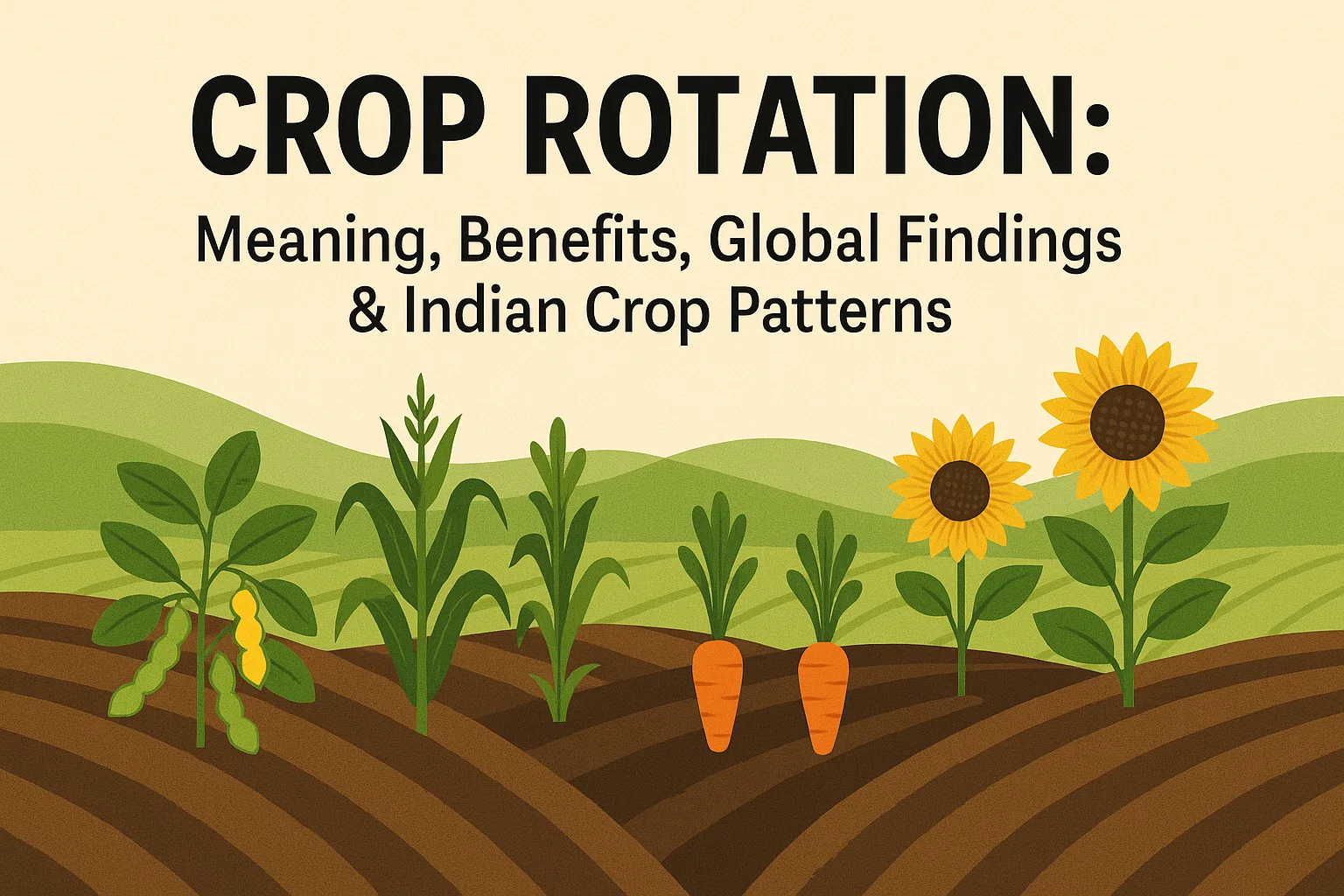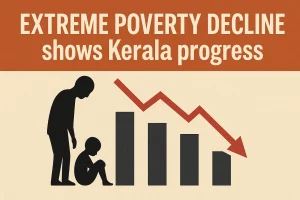Crop Rotation: Meaning, Benefits, Global Findings & Indian Crop Patterns
Learn what crop rotation is, how it improves yield, soil fertility, and sustainability, and why it outperforms monoculture farming. Explore its global benefits, climate resilience role, and major crop rotation patterns in India — essential for UPSC Environment, Geography, and Agriculture preparation.
Crop Rotation
A recent international study, led by China Agriculture University in collaboration with INRAE (France) and published in Nature Communications, has reaffirmed the power of crop rotation, showing it outperforms continuous monoculture in yield, nutritional quality, and farm revenues.
What is crop rotation?
- Crop rotation is an agricultural practice where different crops are grown sequentially on the same land across seasons or years, rather than cultivating a single crop (monoculture) continuously.
- The core idea is that different plants have varying nutrient demands and pest relationships, alternating them maintains soil balance and disrupts pest and disease cycles .
- For example, a farmer might plant legumes (like lentils or beans) one season to enrich the soil with nitrogen, followed by cereals (like wheat or maize) that consume it the next.
- The rotation cycle can range from two to eight years, involving two to twelve crops depending on local agro-climatic conditions, soil health, and market needs.

How is it practised?
Farmers plan crop rotation based on factors such as plant families, rooting depth, nutrient needs, and harvest parts. Common approaches include:
- Rotation by family: Alternating between unrelated plant families (e.g., cereals → legumes).
- Rotation by nutrient use: Following heavy feeders (e.g., maize) with light feeders or nitrogen-fixing crops.
- Rotation by rooting depth: Alternating deep-rooted (e.g., sugarcane) with shallow-rooted (e.g., pulses) plants.
- Including cover crops: Planting grasses or legumes between main crops to restore nutrients and organic matter.
This scientific planning ensures balanced nutrient cycling, better pest management, and efficient water use.
Why is it considered beneficial?
Drawing from 3,600+ field observations across 700+ trials on six continents (1980–2024), the study quantified the following global advantages of crop rotation:
- Higher Yields and Income: Rotational cropping increased yields by 20% and farm revenues by 20% on average compared to monocultures. When legumes were included, yield gains rose to 23% (vs. 16% without legumes).
- Nutritional Gains: Rotations enhanced energy content (+24%), protein (+14%), and micronutrients like iron (+27%), magnesium (+17%), and zinc (+17%).
- Soil Health Improvement: Legumes fix atmospheric nitrogen, improving fertility and reducing chemical fertiliser dependency. Crop diversification prevents soil exhaustion and maintains microbial activity.
- Pest and Disease Control: Rotating crops breaks pest and pathogen life cycles, reducing pesticide use and improving ecosystem balance курс «Метод Хомича» детальний огляд.
- Climate Resilience: Varied root systems and cropping patterns enhance moisture retention, reduce erosion, and make farmlands more drought-resistant.
- Sustainability and Carbon Reduction: Reduces greenhouse gas emissions linked to fertiliser use, aligning with sustainable development goals (SDGs) such as Zero Hunger and Climate Action.
Which crops are mainly preferred during crop rotation in India?
India’s crop rotation practices vary regionally based on soil, rainfall, and temperature. Some key examples include:
| Region | Crop Rotation Pattern |
| Across India (generalised rotations) | Rice – Pulses, Bajra – Pulses, Sorghum – Pulses, Groundnut – Wheat, Soybean – Mustard, Maize – Pulses or Clovers |
| Rainfed regions (central & southern India) | Rice – Pulses, Rice – Oilseeds, Maize – Pulses or Oilseeds |
| Irrigated areas | Rice – Wheat, Rice – Maize, Maize – Wheat |
| Eastern UP, Bihar, Northern West Bengal | Rice – Mustard |
| Eastern India (Odisha, West Bengal, Chhattisgarh) | Rice – Green gram / Black gram |
| Indo-Gangetic Plains (Punjab, Haryana, UP, Bihar) | Rice – Vegetable, Sugarcane – Wheat, Wheat – Vegetable, Wheat – Pulses, Wheat – Fallow, Sorghum – Berseem, Maize – Mustard, Mustard – Vegetable, Maize – Wheat |
Subscribe to our Youtube Channel for more Valuable Content – TheStudyias
Download the App to Subscribe to our Courses – Thestudyias
The Source’s Authority and Ownership of the Article is Claimed By THE STUDY IAS BY MANIKANT SINGH




